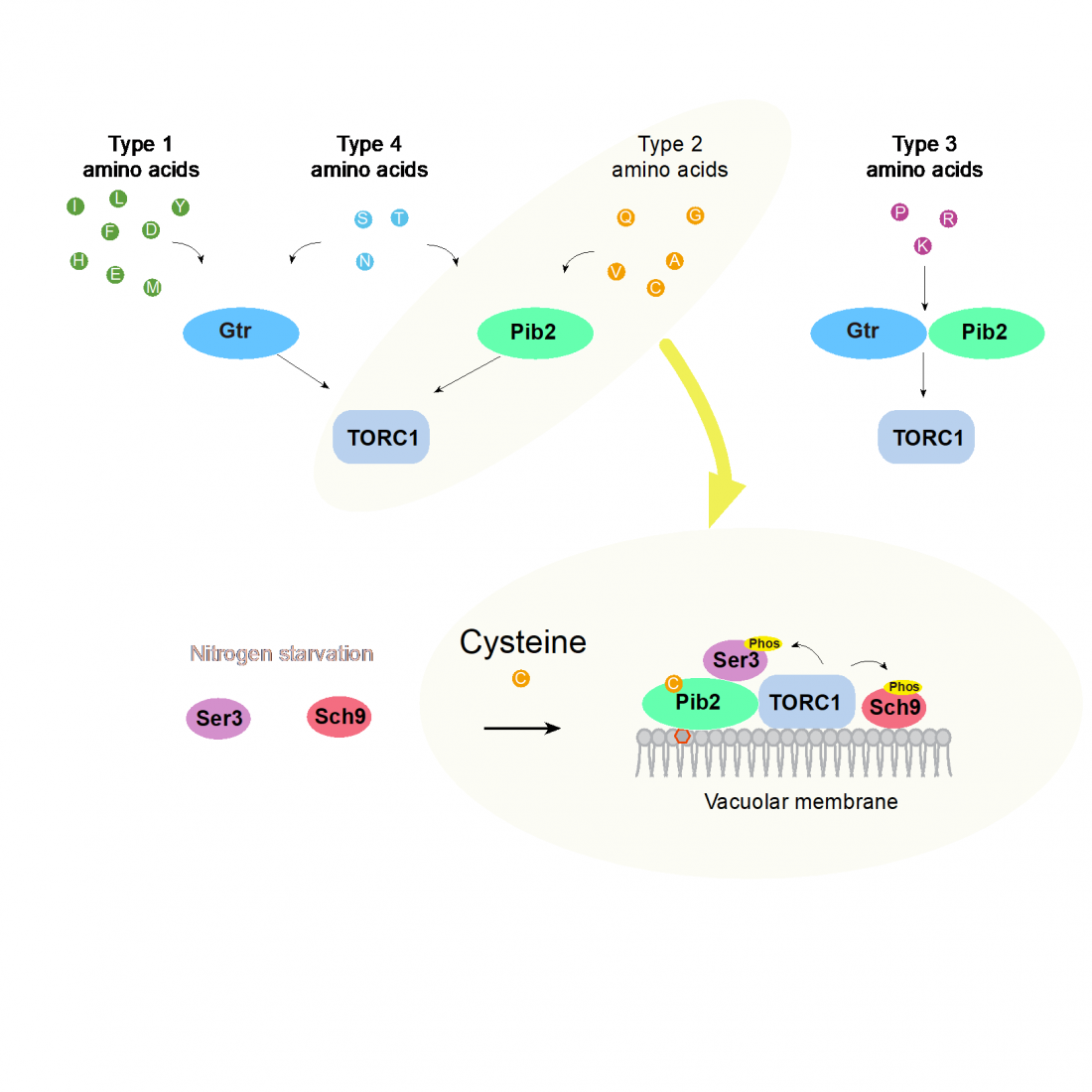Pib2 senses Cysteine to activate TORC1
Researchers from Osaka University discover how cysteine activate a key regulator of cell growth in yeast
Osaka, Japan – Amino acids are the building blocks of life. We obtain them from the food we eat, and the body uses them to make proteins, which in turn are used for growth, development, and a multitude of other functions. However, before the body can build with these blocks, it must first be able to sense their presence.
When amino acids are available, a master regulator protein called TORC1 is switched on, causing proteins to be manufactured and cells to grow. If no amino acids are available, TORC1 is switched off, and cells start to recycle themselves in a process known as autophagy. Until now, it was unclear exactly how amino acids triggered the TORC1 switch in yeast.
Now, in a study published in Cell Reports, researchers from Osaka University have revealed how TORC1 is activated: detection of the amino acid cysteine.
“We investigated the relationships between amino acids and TORC1 activation in the yeast Saccharomyces cerevisiae,” says the study's lead author Qingzhong Zeng. “We found that cysteine is sensed by a protein called Pib2 and that the two bind together and activates TORC1. This stimulates the synthesis of proteins and lipids, promoting cell proliferation.”
What’s more, cysteine is not the only amino acid that triggers TORC1. All 20 amino acids were found to differently affect TORC1 using two ‘pathways’: Pib2 and Gtr. A pathway can be thought of as a specific chain reaction that leads to certain outcomes in a cell. The team set out to elucidate how each amino acid uses these pathways to affect TORC1.
“Some amino acids primarily use the Pib2 pathway, while others primarily use Gtr,” explains senior author Takeshi Noda. “We also identified amino acids that can use either pathway and some that need both. This work excites us because it deepens our understanding of how amino acids control cell growth and autophagy, and how each amino acid is detected.”
In humans, faulty TORC1 function has been linked to diseases like cancer, diabetes, and dementia. A fuller understanding of how TORC1 is switched on and off, and how each amino acid is detected, could help researchers find new treatments for these diseases – an exciting prospect indeed.
###
The article, “Pib2 is a cysteine sensor involved in TORC1 activation in Saccharomyces cerevisiae,” was published in Cell Reports at DOI: https://doi.org/10.1016/j.celrep.2023.113599
About Osaka University
Osaka University was founded in 1931 as one of the seven imperial universities of Japan and is now one of Japan's leading comprehensive universities with a broad disciplinary spectrum. This strength is coupled with a singular drive for innovation that extends throughout the scientific process, from fundamental research to the creation of applied technology with positive economic impacts. Its commitment to innovation has been recognized in Japan and around the world, being named Japan's most innovative university in 2015 (Reuters 2015 Top 100) and one of the most innovative institutions in the world in 2017 (Innovative Universities and the Nature Index Innovation 2017). Now, Osaka University is leveraging its role as a Designated National University Corporation selected by the Ministry of Education, Culture, Sports, Science and Technology to contribute to innovation for human welfare, sustainable development of society, and social transformation.
Website: https://resou.osaka-u.ac.jp/en



